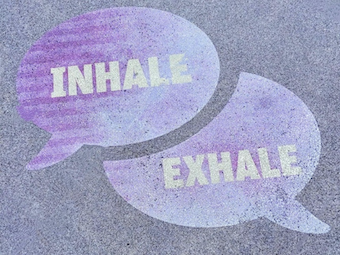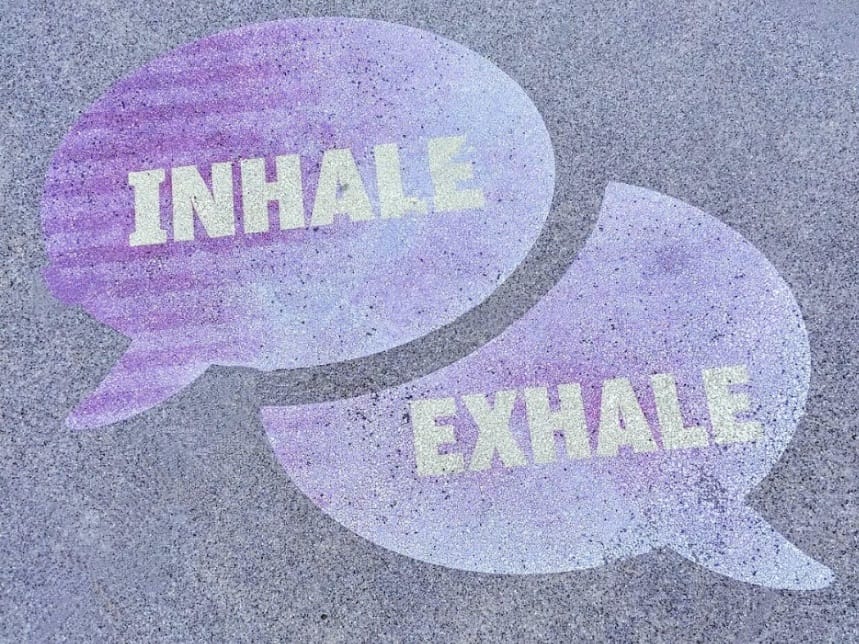
Feldenkraisian breathwork

Listen.
Are you breathing just a little
and calling it a life?
— Mary Oliver
In 1973, Moshe Feldenkrais started a month-long training on teaching Awareness Through Movement in Berkeley, California, by teaching a version of “See-saw breathing.” Asking the participants to explore the many means by which they can get air into and out of their lungs, Feldenkrais challenges the notion that there is only one correct way to breathe.
As far as I know, this 1973 program was the only time Dr. Feldenkrais commenced any course by focusing on respiration. By making breathing the starting point, he laid the groundwork for exploring breathing throughout the rest of the program.
Though only a couple of the more than three dozen classes in the workshop explicitly addressed respiration, Feldenkrais often returned to breathing and its importance. For instance, during a classic “Flexion” lesson, Feldenkrais pointed out how inhalation hinders the rounding of the spine. During a lesson about arching, he had them experience how inhalation helps make extension easier, lest the students conclude that they should always breathe out while moving.
Emphasizing how vital breathing is, Moshe declared that we are built to breathe and move simultaneously. That being so, any interruption provides an unambiguous and noticeable indication of inefficient action. He made respiration meaningful by requesting that participants monitor their breathing while moving. Going beyond simply noticing when they hold their breath, he challenged students to discover how to move without interfering, making it an essential aspect of learning and self-improvement.
What’s more, Moshe challenges the dichotomy of chest and belly breathing. While he hinted at three different ways of breathing at the beginning of the Alexander Yanai lesson called “Breathing” (AY 17, paragraph 3), in the Berkeley program, Moshe is explicit, clearly delineating three ways to increase the volume of the chest: expanding the chest, lower abdomen, or lower ribs. Pointing out how the lobes of the lungs are wider at the bottom, he argues for the significance of the third option.
Refusing to prescribe how to breathe, Feldenkrais emphasizes the importance of adapting respiration to circumstances. He illustrates this point by having students experience how the action of the muscles changes according to their orientation in space. Over and over again during the lessons, he points out in different ways how fixed patterns of breathing and moving interfere with our ability to adapt, making action less than graceful and unnecessarily strenuous.
The method that bears his name may not be a form of breathwork per se, but the Berkeley curriculum demonstrates how essential breathing is to Moshe’s somatic methodology. Though we find many, if not all, of these tactics and techniques elsewhere, this program offers a lucid, comprehensive master class on the Feldenkraisian approach to realizing our potential for effective, efficient, enjoyable action.
Intrigued by Moshe’s approach to working with the breath, I developed a series of Awareness Through Movement lessons called It’s a Matter of Life and Breath. You can purchase the shorter program for 20% off through the end of March 2024 using the coupon Breathwork.
In addition, I will be teaching The House of Breath, an advanced course for Feldenkrais teachers and trainees from May 11th through 15th, 2024. The program clarifies the Feldenkraisian approach to breathing well, identifies what interferes with it, and shows you how to move past limitations to elicit your student’s innate ability to breathe easily and move well. Practically speaking, you will learn a remarkably effective Functional Integration lesson that addresses how the spine, ribs, breastbone, diaphragm, and other trunk muscles drive inhalation and exhalation.
I modified a photo from www.pixabay, created by kathleenport, for the image at the top of today’s post.
Your thoughts?
Please let us know your perspective! Add your comments, reactions, suggestions, ideas, etc., by first logging in to your Mind in Motion account and then clicking here.
Commenting is only available to the Mind in Motion Online community.
Join in by getting your free account, which gives you access to the e-book edition of Articulating Changes (Larry's now-classic Master's thesis), ATM® lessons, and more — all at no charge whatsoever.
To find out more and sign up, please click here.
Please share this blog post
 This work is licensed under a Creative Commons Attribution-ShareAlike 4.0 International License
This work is licensed under a Creative Commons Attribution-ShareAlike 4.0 International License
This blog may contain one or more affiliate links. When you click on a link and then make a purchase, Mind in Motion receives a payment. Please note that we only link to products we believe in and services that we support. You can learn more about how affiliate links work and why we use them here


Responses